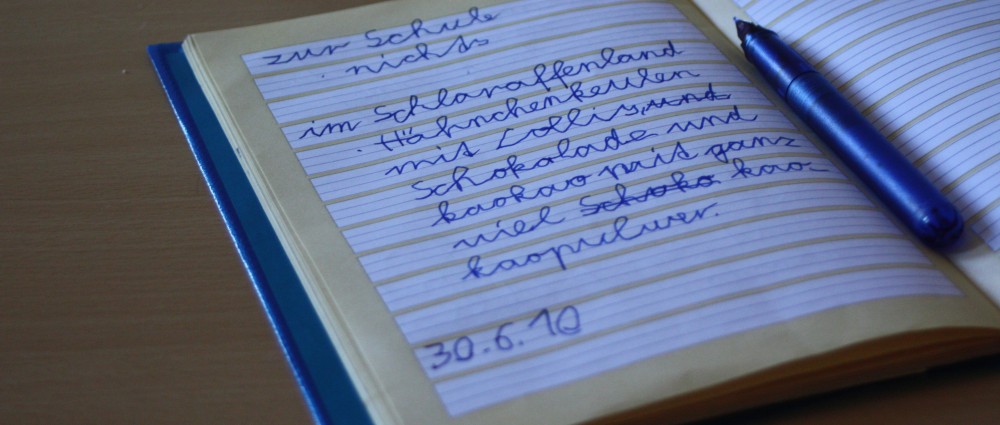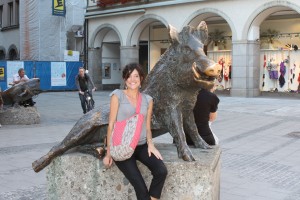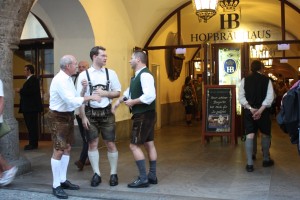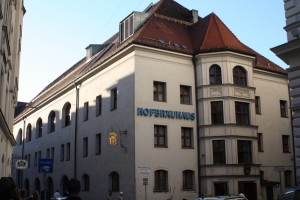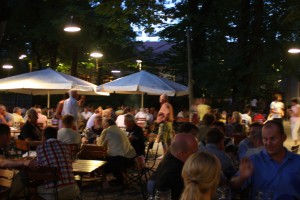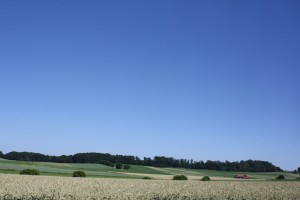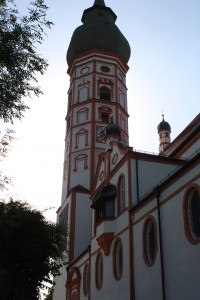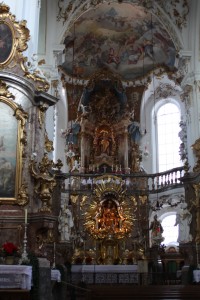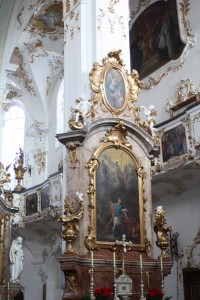Ah, Munich. After arriving, we freshened up, and then headed to the city center of Munich. One of the first things I saw was a statue of what our guide called a “wild boar”. Since it looked a Razorback to me, I had my friend snap a photo of me sitting with him!
The culmination of our tour was spent touring Munich: seeing the sights, tasting more Bavarian food, and enjoying each other’s company. Some of the spots we were sure to hit:
1) Hofbräuhaus
I had never heard of this place before, but apparently it was a place we had to experience! Our guides warned us that we would see more Americans and other tourists here than in any other place we had been, and they were right. The Hofbräuhaus could be fairly called *the* number one tourist attraction in the Munich city center. This place is everything that Bavaria is all about. (i.e. long wooden tables and benches. Drinks are served in 1 litre sized glasses. Giant pretzels on sale and an ompah band playing traditional Bavarian brass band music.) Although I was underwhelmed by this theme-park-ish, touristy, restaurant, I am glad we went. Here’s a pic of the outside of the restaurant, complete with guys dressed up in their traditional Bavarian lederhosen.
2. Olympic Stadium in Munich
A small group of us visited the place where the 1972 Summer Olympics were held in Munich. These games were the second Summer Olympics to be held in Germany, after the 1936 Games in Berlin, which had taken place under the Nazi Regime. Mindful of the connection, the West German Government was anxious to take the opportunity of the Munich Olympics to present a new, democratic and optimistic Germany to the world. However, the Games were overshadowed by what has come to be known as the Munich massacre. On September 5th, a group of eight Palestinian terrorists broke into the Olympic village and took eleven Israeli athletes, coaches and officials hostage in their apartments. Two of the hostages who resisted were killed in the first moments of the break-in.
3. Augustiner Keller
I can’t talk about the culture of Bavaria without mentioning the concept of the biergarten. Basically, a biergarten is an open-air area, where beverages and local food are served. The concept originates from and is most common in Southern Germany, especially Bavaria, and in places like Munich, one may serve large numbers of customers. Many people bring their own food in and just buy drinks. This one in Munich had a band which covered songs we knew from the 70’s, 80’s and 90’s. Fun!
band playing at Augustiner Keller in Munich
4. Andechs Monastery
With its brewery, Bräustüberl, monastery restaurant, and monastic pilgrimage church, Andechs is a very sought after meeting place attracting visitors from around the world. Located at the top of the “Holy Mountain” in the middle of Upper Bavaria’s Five-Lakes Region, Andechs Monastery is visible from far away. Here are some pics I took from inside the bus on the way to the monastery! Gorgeous!
In 1846, King Ludwig I of Bavaria bought Andechs Monastery and presented it as a working farm to the Munich Benedictine Abbey, St. Bonifaz, which he had recently founded.
The monks of the oldest monastic order, The Order of St. Benedict, of the Catholic Church, have done a lot for the spread of the Faith and the cultivation of Europe in the course of the centuries. Their monasteries were not only the places of prayer concentrating on a life devoted to God, but were also centers of learning and art.
We learned about the interior of the church hall, which is a Gothic hall church dating from the early 15th century and decorated with rich colors of mid-eighteenth century Rococo. (also referred to as “Late Baroque” because Baroque artists gave up their symmetry and became increasingly more ornate. Rococo rooms were designed as total works of art with elegant and ornate furniture, small sculptures, ornamental mirrors, and tapestry complementing architecture, reliefs, and wall paintings.) Here are some examples of how the Gothic and Rococo styles are intermingled inside this monastic church.
